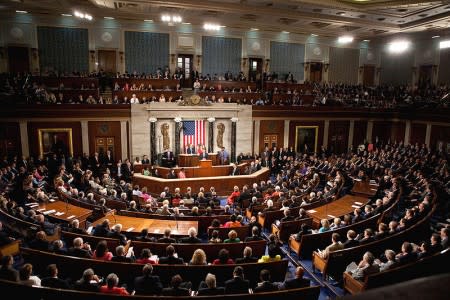Facts, figures about the partial government shutdown
It now seems all but certain that part of the federal government will shut down starting on Tuesday, as Democrats and Republicans can’t reach a deal on short-term funding in Washington.
So what will remain open and closed, and how long will the partial shutdown last?
Barring a last-second deal on a short-term budget extension, as many as 800,000 government workers could face furloughs, and some highly visible government services could become unavailable.
Here’s a list of departments and services that will be affected: National Park Service sites will most likely be closed; visa and passport applications will go unprocessed; veterans and military benefits will be delayed; bankruptcy cases will be suspended; payments to federal jurors will be deferred; and some health research services won’t be available.
Employees who provide these services would likely go on a “shutdown furlough” where they are placed on temporary, non-duty, non-pay status. The shutdown furlough is not considered a break in service and the workers receive credits for retaining their benefits and seniority.
The Congressional Research Service, in a report updated last Wednesday, said that about 800,000 people were furloughed in the last series of shutdowns in 1995 and 1996.
That is where the estimate comes for the number of people that would be affected by a 2013 furlough, but until the shutdown happens, the total number of employees affected by it remains a bit of an unknown.
Congress is considering a bill that would ensure that military personnel keep getting paid during the partial shutdown.
Employees who will keep on working during the shutdown are known as “excepted” workers.
The Antideficiency Act was amended in 1982 to ensure that “excepted” areas existed in the government that still received funds during a shutdown. In addition, legal opinions from President Jimmy Carter’s era define more areas that are exempted from a shutdown caused by a funding gap.
And due to constitutional measures, Congress, the president, and the Supreme Court will be paid during the funding gap and shutdown.
Social security checks will still be issued, but this was also a point of contention in the 1995–1996 shutdown, when the government had to recall furloughed employees to handle services.
Examples of employees and agencies that are exempt from the shutdown include people who provide national security and law enforcement services; provide for benefit payments; conduct essential activities related to medical care, public health and safety; provide air traffic control; conduct border and coastal protection and surveillance; and people who protect government property.
Going back to the 1995–1996 example, there were a total of 4.3 million federal employees on payrolls. So 800,000 people, or 18.6 percent, of government workers were furloughed.
But there is an interesting facet of a 2013 shutdown that didn’t exist in 1996: the possibility that public government websites would go dark during a shutdown. The White House issued a memo with guidance about possible website shutdowns on September 17.
And not only could some websites be shut down, but other websites available to the public would not be updated, and information submitted by the public wouldn’t be processed.
The Office of Management and Budget is requiring disclaimers on the landing pages of affected websites.
As for the question of how long a shutdown would last, they have not been long events, due to their unpopularity.
The most recent government shutdown between December 15, 1995, and January 6, 1996, lasted 21 full days, which is the longest on record. That was preceded by a five-day shutdown in November 1995.
Shutdowns date back to the Ford and Carter administrations. When Carter was president, they averaged 11 days; during President Ronald Reagan’s two terms, there were six shutdowns, averaging one or two days apiece.
In 2013, Congress faces a big deadline on raising the debt ceiling on October 17. Without the ability to borrow money, the federal government wouldn’t have some money it needs to pay the bills it delays during a shutdown.
So the current House and Senate will be under pressure to find a solution to the shutdown problem before it moves to a potentially bigger issue involving the United States government possibly defaulting on its debt.
Recent Constitution Daily Stories
Reviewing the 14th Amendment debt ceiling argument
Can Tumblr make a difference in the Supreme Court’s campaign financing case?
What if Congress doesn’t increase the debt limit? The risks of default


